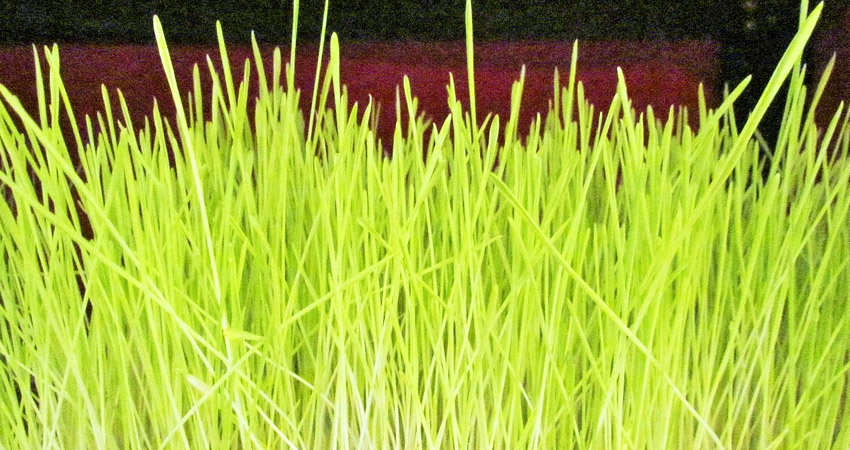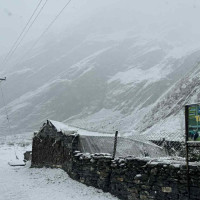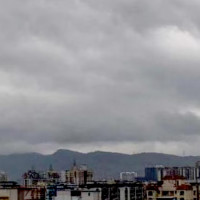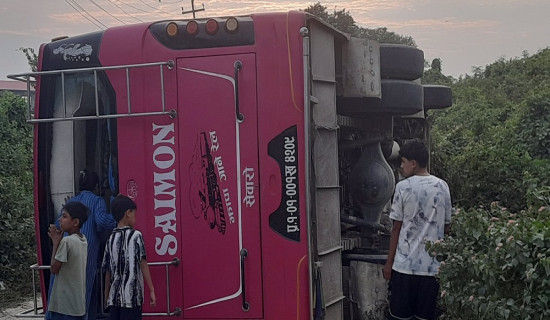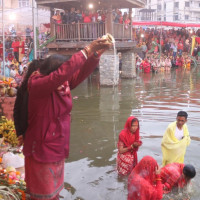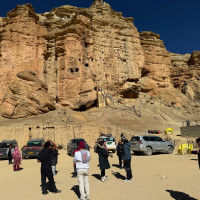- Tuesday, 28 October 2025
Dashain begins with Ghatasthapana rituals today
BY A STAFF REPORTER,Kathmandu, Oct. 3: People are preparing to grow the Jamara, shoots of wheat, maize and barley, in their prayer rooms on the day of Ghatasthapana on Thursday.
Ghatasthapana is the first day of the Dashain festival, which formally begins by offering worship to Goddess Nava Durga and sowing the seeds to grow the Jamara, which is offered with tika to juniors on the day of Bijaya Dashami.
People first clean the place where a vessel is to be placed with the mixture of cow dung and red mud. The vessel filled with holy water with leaves of the Pipal tree and an oil-fed lamp are kept in the same place. According to the Nepal Calendar Determination Development Committee, the auspicious hour for sowing Jamara and placing the auspicious vessel is 9.16 am. Ghatasthapana means placing the vessel.
The goddess is believed to boost one’s self-confidence if the puja is offered with a pure and fair soul during Navaratri or the nine nights of the festival. On this day, the vessels are also placed at the Dashain Ghar of Hanumandhoka, Patan and the Jamara is grown at the Samarjung Company Office of Bhotahiti.
The Navaratri Parba of Bada Dashain, the great festival of Nepalis, officially commences on the day of Ghatasthapana. Throughout these nine days, the nine different forms of the goddess known as-- Shailyaputri, Brahamcharini, Chandraghanta, Kushmanda, Skandamata, Katyayani, Kalaratri, Mahagauri and Siddhidhatri are worshipped.
The 10th day is the most important and is known as Bijaya Dashami or the day of victory. On this day, the younger persons receive auspicious tika and Jamara from the elder people with blessings for peace, progress and prosperity.
The festival of Navaratri is celebrated to cherish the victory of good over evil. These nine days are associated with the battle that was fought between the Goddess Durga and the Demon king Mahishasura.
Uddhav Man Karmacharya, the main priest of Teleju Bhawani of Hanumandhoka, said that Jamara is also grown at the Dashain Ghar but it is not provided to the common people.
The people who are unable to place the vessel and grow Jamara in their own homes and cannot receive tika on the day of Bijaya Dashami from their seniors and relatives are provided with the Nava Durga prasad and Jamara from the Hanumandhoka Dashain Ghar.
The people visit several shrines of goddesses during the Navaratri. They visit Naxal Bhagawati, Shobha Bhagawati, Maitidevi, Guheswori,
Bhadrakali, Kalikasthan, Sankata, Mahankalsthan, Naradevi, Bijayeswori, Indrayani, Dakshinkali, Chamunda, Bhramayani and other temples in the early morning.
Pathibhara of Taplejung, Nasingh Bhagawati of Baglung, Devi temple of Pachthar, Jalapadevi of Nuwakot, Bhutandevi of Hetauda, Manakamana of Gorkha, Purnachandi of Patan, Ugrachandi of Nala, Naradevi and Raktakali, are some of the shrines, which draw big crowds of devotees during the Navaratri.

